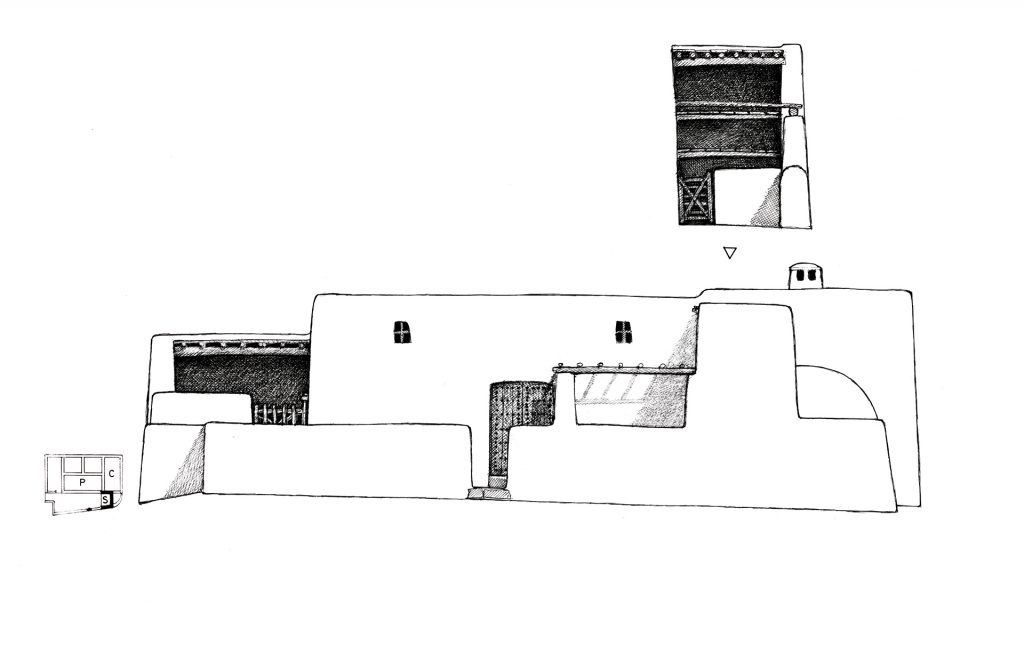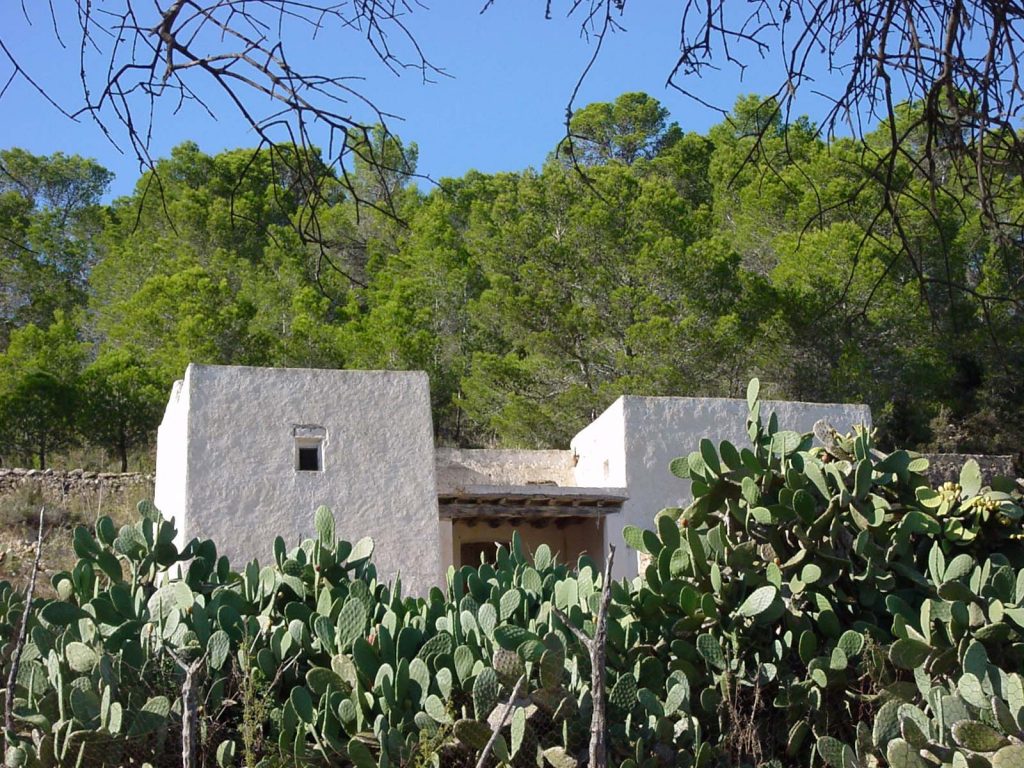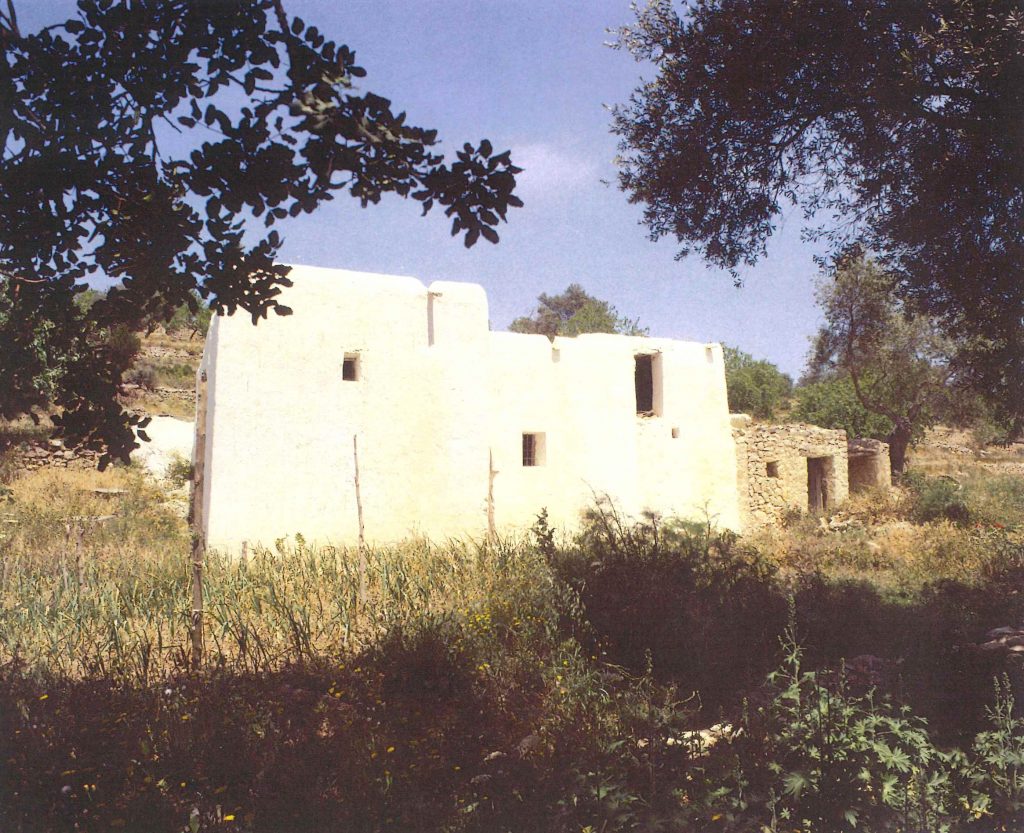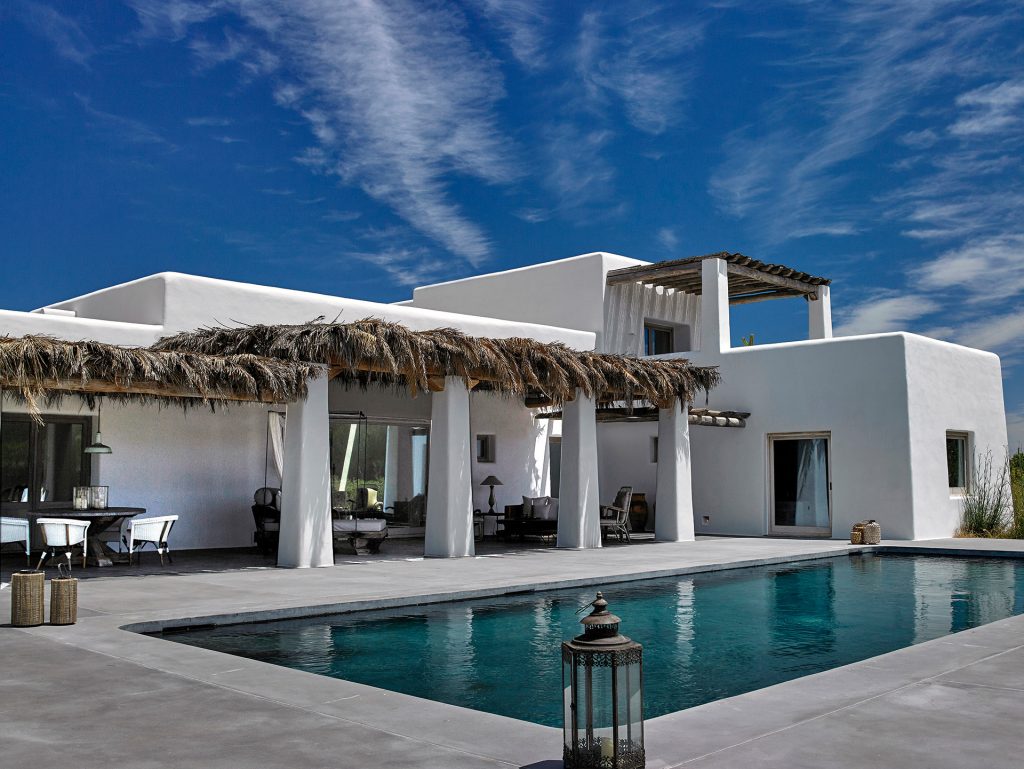Nowadays, the most common association with Ibiza’s architecture comes from the keywords “Ibiza luxury villa”. Some adventurers, selective visitors or wealthy people with purchasing power seek intimacy and peace, without sacrificing the comfort, luxury and amenities of a modern palace. These modern or highly restored villas are the living embodiment of today’s opulence, typically located inland with views of the sea or surrounded by the forest. Oddly, such pharaonic constructions are completely opposite to their original inspiration: the casa pagesa. A casa pagesa literally means “the peasant’s house”, being pagès the Balearic and Catalan word for farmer or peasant. As a result, pagesa is the feminine adjective for casa, “house”. Designed as a humble, solid and practical space, it has protected its inhabitants from the intense sun during the long summers and the expected bad weather of winter. Even today, the beauty and simplicity of its design remain timeless, considering for some a living testament to the roots of Ibiza.

Unlike certain contemporary visions, what makes the casa pagesa is its humility. If we go back in time to Ibiza before the tourism boom of the 1960s, the white island was populated mainly by farmers. These farmers would work from dawn to dusk to keep going. The philosophy was that of survival, rather than an ethical or voluntary approach: agriculture, fishing and physical work as the only means of feeding the family. In this context, farmers would face a big challenge to build their homes: scarce materials, irregular slopes and a general lack of machinery or industrial assistance to build. To face such restrictions would lead to the creation of an unconscious notion of beauty that resides in simplicity, in what is intrinsically linked to bare nature itself. It’s funny to think that another trendy concept on today’s hotel business offering, the so-called “wabi-sabi” design, was practiced by Ibizan farmers for centuries. Far from indulging in recreation, it was by necessity. Our ancestors had lived more than we can imagine, resulting in a cohesive philosophical, practical and aesthetic approach to architecture.
Ibiza, placed on the map for centuries
One thing we should keep in mind to fully understand the unique character of Ibiza: it has been called “home” for civilizations dating back thousands of years b.C. Phoenicians, Carthagians, Romans, Byzantines, Arabs… This consistent trace of cultures made Ibiza so unique, in which the origins of the casa pagesa could be found. For the painter and architect Eric Muhle, such origins could be traced in the ancient Middle East. Maritime trade and the constant contact between Mediterranean cultures would do the rest to sow the seed of this architecture in Ibiza.
As a result of Muhle’s studies, we can summarize that the typical casa pagesa is built by a cube. Muhle emphasizes the technique of the union or addition of cubes as the essence of the rural architecture of Ibiza. The main cube is a rectangular cube named porxo. The porxo was roughly our idea of a living room, in the sense that it was the place where the household would be reunited and socialized. Here, you would invite your neighbour or close relatives and have a strong glass of vi pagès (farmer’s local red wine) while chatting surrounded by very modest and practical furniture. Beside the porxo, several cubes would be built according to the requirements of the house, usually rooms. If additional spaces are required, additional cubes would be contiguous. The only exception to the stereotyped cube design would be the kitchen, with a cubic rectangular shape as well, and with a high ceiling. The average traditional indoor space per cube was comparatively small for the current trend (3-4 meters). In addition, the traditional windows of a casa pagesa are very small, usually a single available on each room and 50×70 measurements.

The international association of Ibiza as a “white” island, apart from the symbolic meaning of a pure and immaculate paradise, comes precisely from the exterior finishes of the walls of the casa pagesa. There are two kinds of surfaces in the outside thick walls: the white plastered wall and those with visible limestone with ochre tones. Another curiosity is that we associate the «white island» of Ibiza with its traditional rural architecture and somewhat with other buildings in the interior, such as old churches. Curiously, the earliest constructions were not white, but ochre, leaving the natural limestone finishes discreet and avoiding being detected from the coast. The materials were what the pagesos could put their hands on: clay, limestone, granite, pebbles, sandstone, Spanish juniper or Aleppo pine. Rough and irregular shapes are common, some of the natural charm of these homes.
The interior rooms or cubes are whitewashed and we find only a few practical conveniences for family or social meetings: mainly tables and chairs in simple wood. Unlike modern taste, the windows mentioned were so rare and so small for a double objective. First of all, to keep the interior of the house fresh during hard summers, hence the thick walls and small holes to avoid the heat of the sun. On the other hand, Ibiza was frequently attacked by pirates up to the 18th century, mostly from the northern coasts of Africa. So the idea of small windows to protect against exposure was also a tactical decision.
A clear lifestyle: preserving nature

The casa pagesa faces south to have the most natural light possible. Almost all homes have a cistern to collect rainwater, thus satisfying the thirsty farmer and feeding crops and livestock. It is quite common to find a cooking clay oven, with a typical cupola inspired by the Arab heritage on the island. So it is absolutely shocking to compare this responsible and practical exploitation of resources to contemporary housing on the island. Ibiza’s humble and traditional constructor would approach building in a fascinating manner. Everything that implies complexity, unnecessary luxury, or leads to a lack of effective results is automatically dismissed. Unquestionably, ingenuity, the wisdom of generations, and resilience, have been the very constitution of the old pagesos. All our current problems and challenges concerning ecology, sustainability and protection of cultural minorities were put into practice for centuries in Ibiza before it was “discovered” on a world scale. We have much more to learn and be inspired by just analysing the old ways of building a casa pagesa. Every piece, every corner, has its purpose, deeply embedded in nature. Without nature, life is impossible.

In short, as Walter Benjamin suggested in his work, our responsibility for culture is to re-use, reinterpret, update old materials to create a new reality. We must contribute to new ideas and initiatives as a result of our rich cultural heritage. Not in vain, the Berlin intellectual made his way to Ibiza in 1932 and 1933. As the title of this text indicates, it is a question of resuming, revisiting the past, giving life to new ideas and a more responsible way of life. The key to an enduring future for Ibiza lies in the wisdom of these constructions. They taught us how to cope with the climate, the scarcity of materials, a harsh lifestyle and very limited food sources.
The message we find portrayed in the casa pagesa is that of hope, and a deep sense of humanity. The perfect balance between usefulness and aesthetics. Works of inspiring human beings with a profound, almost sacred respect for the natural world. The ancestral farmer faced unimaginable conditions and challenges, yet he patiently resisted them. They bear witness to a community in close contact with our environment, perfecting a philosophy so necessary in these times of cultural, political and existential struggle: humility.
All the sources used for this article can be found in: Julbe, F. y Pascuet, R. (2002). Arquitectura y espacio rural en Ibiza (4a. ed.). Eivissa: Col·legi Oficial d’Arquitectes d’Eivissa i Formentera. Demarcació d’Eivissa. (Colección Monografies de la Demarcació d’Eivissa i Formentera del Col·legi Oficial).
Thanks to Blakstad Design Consultants and Conrad White for the images and drawings provided.
